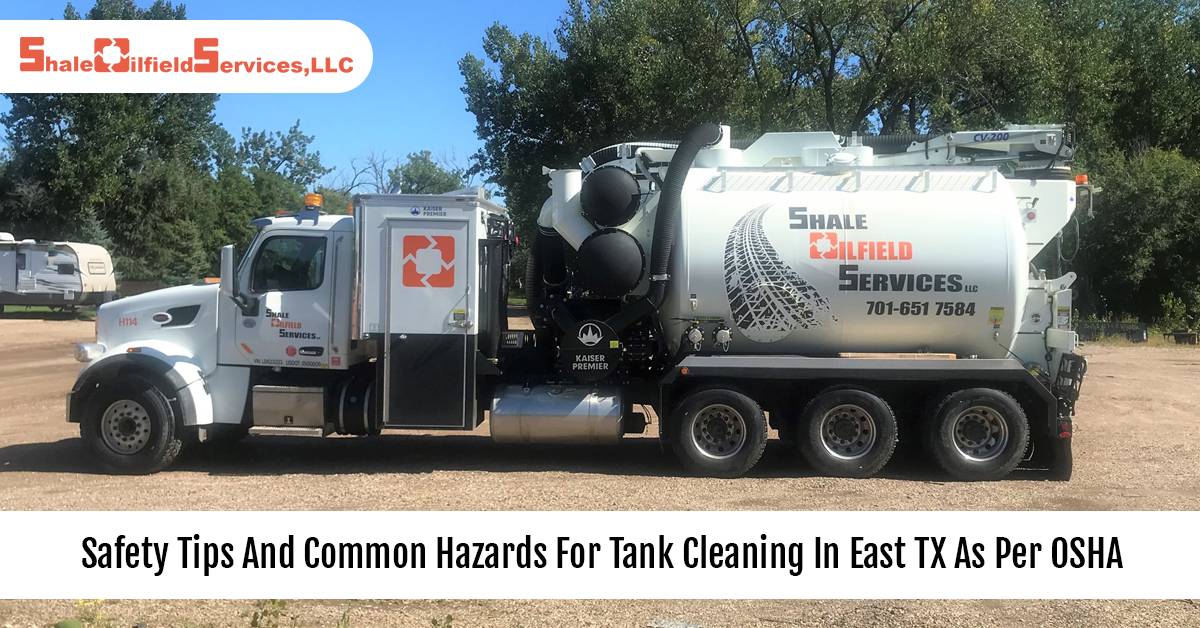
Safety Tips And Common Hazards For Tank Cleaning In East TX As Per OSHA
Published on: April 25, 2024
Crude oil, chemicals, corrosives, diesel, and other potentially dangerous materials are some of the common substances that are stored and transported via storage tanks.
And like any tank that is used for transporting and storing materials or even waste tanks, it needs to be routinely cleaned to ensure the health of the tanks and the surrounding environment, which is exactly where tank cleaning services in East TX come to play.
By its very nature cleaning storage tanks requires working in confined spaces along with the contaminants that remain inside the tanks which can increase the risk of explosion, fire, chemical injuries to the cleaner of the tanks, and more.
Hence in this post as one the most reputed providers of Hydrovac Services East TX, let us look into how workers can stay safe while cleaning tanks and also remain safe while doing so.
When Do Tanks Need To Be Cleaned?
Now this is a difficult question to answer since the requirement for cleaning tanks can happen for several purposes.
For example, tanks must be thoroughly cleaned before any changeover of materials takes place to make sure that any residue of the previously stored material may not contaminate the new material being stored in the tank.
Apart from that to maintain the efficiency and productivity of the tanks plant managers often carry out tank cleaning during plant shutdowns or even schedule routine maintenance of the tanks.
However, as one of the most frequently called tank cleaning services in East TX, we found that the size of the tanks and the materials that the tanks are holding also dictate how fast a tank needs cleaning for the safety of the container and the surrounding environment.
Safety Tips For Cleaning Of The Tanks
Even though primarily it is necessary to ensure that the workers cleaning the tanks are properly trained and certified for the job, here are five other recommendations specified by the Occupational Safety and Health Administration (OSHA) while undertaking tank cleaning activities:
Eye protection: OSHA suggests that the tank cleaners must wear eye protection with side shields to properly guard their eyes from any potential hazards.
Hardhat: The tank cleaners must cover their heads with industry-approved chemical-shielding head gears to ensure safety from overhead hazards.
Boots: OSHA suggests that tank cleaners should use ANSI-certified footwear to ensure proper protection of their feet.
Gloves: It is recommended to wear heavy-duty leather gloves as workers may encounter debris or objects featuring sharp edges inside the tanks along with the dangers found while handling abrasive chemicals.
Respiratory protection: As tank cleaning is done in a confined space the contaminants should not be inhaled. So respiratory protection is mandatory for tank cleaners. As per the suggestions by OSHA – N, R, or P95 filters should be inserted into respiratory masks.
Apart from these workers must be harnessed with retrieval lines attached to them to ensure that they’re properly accounted for and can make a swift exit if something goes wrong.
Takeaway
As you can see, there’s considerable risk involved in tank cleaning – even for a trained professional.
That’s why it’s crucial to eliminate as much risk as possible. We at Shale Oilfield Service ensure that our professionals use the right PPE that can help prevent both short- and long-term illnesses, or worse, and help our cleaners work more quickly and efficiently.